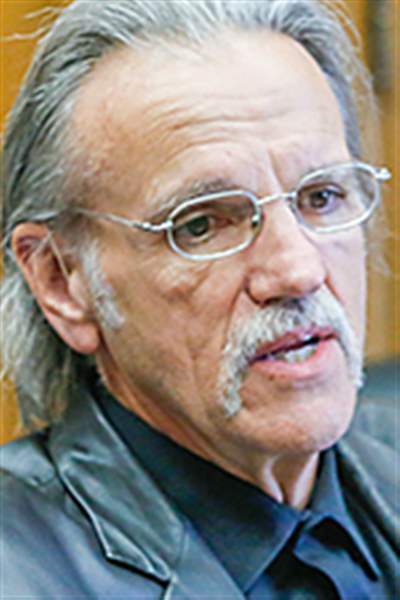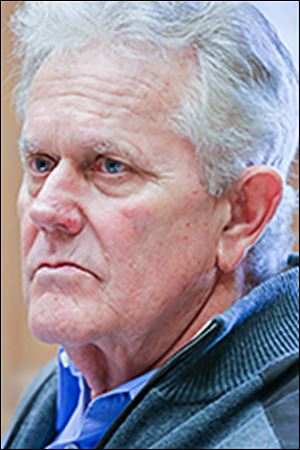
New Lucas County jail plan addresses mental health
Substance abuse help also in works
4/17/2014
Cupples

Cupples
A proposal to construct a new Lucas County jail wouldn’t just include a larger facility that would house more inmates — it would be accompanied by a community plan to treat mentally ill inmates and those with substance-abuse problems.

Tharp
Seventy percent of all inmates in the jail at any given time are suffering from mental illness, a substance-abuse problem, or both, according to a recent study conducted by the Lucas County Mental Health and Recovery Services Board.
The new jail feasibility study was presented Thursday to the Lucas County commissioners.
A team of planners and architects hired by the county to conduct the study and produce a plan to build a new jail are recommending construction of a one-story facility that would be built on 8-10 acres. A location has yet to be determined.
“We have approximately 20 to 24 sites that we are still filtering through,” said presenter David Schoonmaker, senior project manager at SSOE Group, a Toledo architect and engineering company that was hired to help with the study. “We are looking at having a municipal courtroom onsite.”
Andrew Cupples, an architect from DLR Group, an agency that conducted the study, said it was impossible to estimate how much it would cost to build a new jail because it would depend on what amenities the county commission eventually approves.
His group is recommending a jail that would house 550 to 624 inmates, with plans for phased construction and future expansion if needed.
The current jail, which was built in 1977, reaches capacity at 342 inmates, according to the group’s study. On average, there are more than 425 inmates at the jail, and at times, it has reached almost 500.
“We must build a new facility,” Mr. Cupples said. “The current jail facility is inadequate for your current and future needs.”
Commissioner Tina Skeldon Wozniak, who is overseeing the mental health component of the jail plan, said she met with various agencies to develop programs that would provide services — including needed medicine — to mentally ill youth that get into legal trouble.
That would also include follow-up services to make sure those youths are making progress.
Those same services would be provided to adult inmates during pre-trail mental health screenings, which could allow them to get out of jail quicker if they agree to prescribed mental health treatment, Ms. Skeldon Wozniak said.
Many repeat offenders are suffering from mental illness and substance abuse problems, according to Lucas County data compiled by the DLR Group.
Based on a Jan. 9 profile of the jail population, 8.5 percent of all jail bookings in Lucas County — nearly 1 in 10 — are chronic offenders. Nearly a quarter of all bookings are with the small chronic offender population, Mr. Cupples said.
“This is an opportunity of a lifetime,” said Ms. Skeldon Wozniak, referring to the opportunity to implement a plan to address mental health issues of the jailed population. “We’re already working with many community partners who are interesting in trying to meet their needs. Let’s do this right.”
The DLR group has suggested that the construction of a new jail could take three to five years to complete. But Sheriff John Tharp is encouraging the company and commissioners to complete it in 22 months.
“It took 22 months to build the Huntington Center,” Sheriff Tharp said during the presentation. “Why would it take five years to build a jail with all the brilliant minds we have here today?”
Contact Federico Martinez at:
fmartinez@theblade.com
or 419-724-6154.